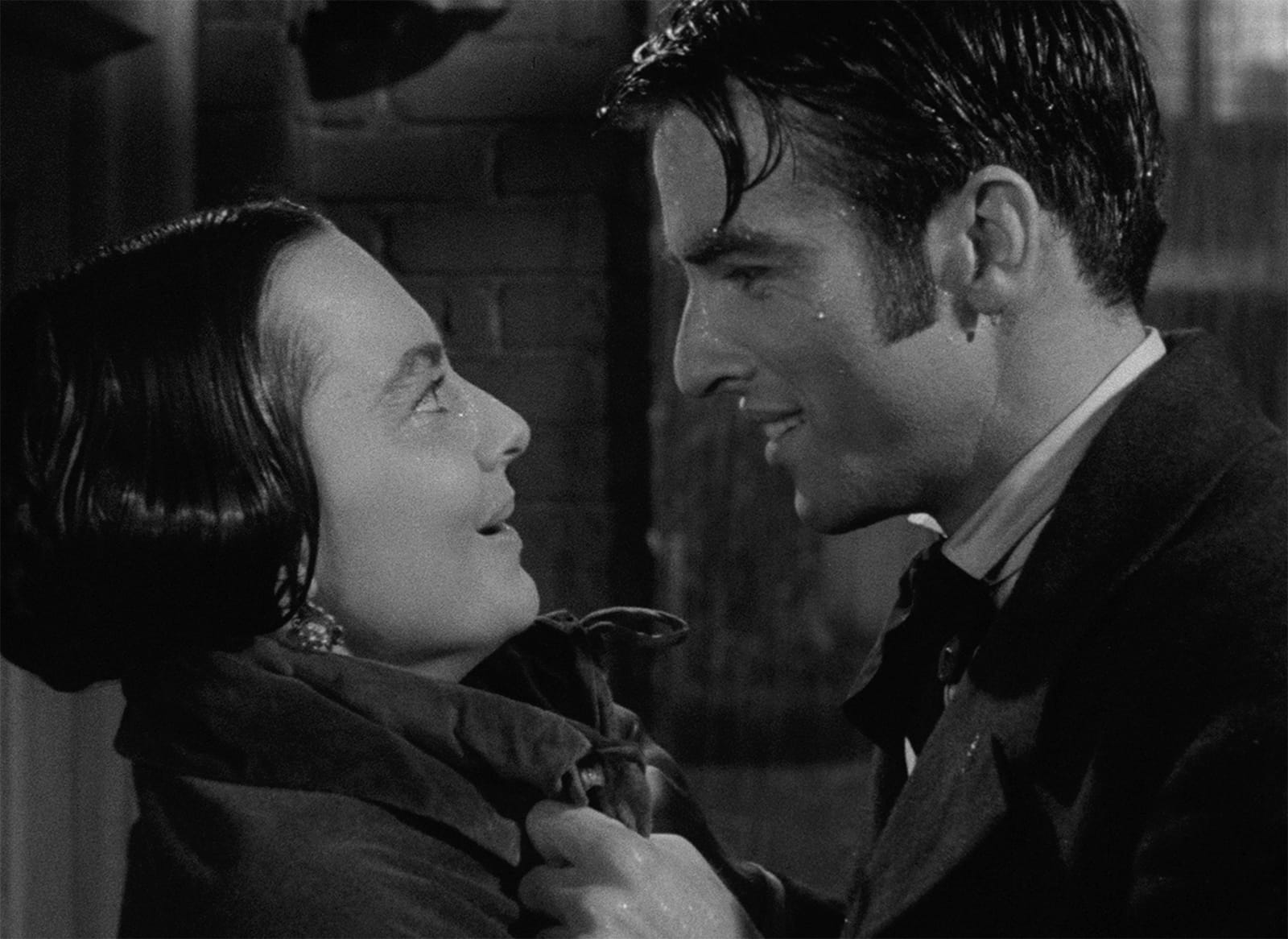Conversely, Catherine’s shifty suitor was played by a rising star, a late-forties matinee idol destined to become a fifties icon: Montgomery Clift, whose casual manner and polished handsomeness make Morris Townsend both enigmatic and tantalizingly desirable. Wyler defended this casting choice to the end of his life, saying in 1973: “I don’t agree with the critics who said that Montgomery Clift was too nice and pleasant to play the fortune hunter Morris Townsend. In the play, he was so obviously a villain . . . In the film, because Clift was so sympathetic, people were horrified when he jilted her.” The relationship wasn’t always smooth during filming, though. Clift was apparently like a small earthquake on set, the picture of a temperamental movie star, sequestering himself with his personal acting coach between takes, and openly disdainful of de Havilland’s talent. Wyler hired a tutor to teach the young actor how to adopt the posture of a man born a hundred years before he was, and let Clift’s evident arrogance bleed into his portrayal of the smooth-talking Morris, while the tension between the costars festered. Clift looms over the shrinking de Havilland in their love scenes in a manner that appears more violently coercive than romantic.
Meanwhile, de Havilland, besides the discomfort of working with Clift, was struggling to play Catherine to her director’s exacting standards. Looking back, Wyler would theorize that perhaps her looks got in the way of her portrayal: “Here you have one of the most beautiful women in the world playing an ugly duckling,” he said. “We did everything in our power to make Olivia homely, but it didn’t work.” In fact, there’s real substance to de Havilland’s Catherine. Wyler always had schemes to jolt a performance out of an actor, and endless patience for retakes. In one scene, in which Catherine is wearily climbing the stairs after being jilted, the director forced de Havilland to go up the steps again and again so many times that she threw her suitcase at him. When he realized the case was empty, Wyler had it filled with books and commanded de Havilland to do another take, in which she finally appeared to be authentically fatigued enough to satisfy him. Even with unplucked eyebrows and pale makeup, de Havilland is a too-beautiful Catherine, it’s true, but her clumsy mannerisms and gauche bursts of emotion go a long way toward creating a character who can believably be dismissed by her own father as an “entirely mediocre and defenseless creature without a shred of poise.” As Catherine toughens up, de Havilland notably deepens her voice, and her famous sweetness dissolves.
De Havilland would deservedly win the Oscar for playing Catherine. Beginning with Melanie in Gone with the Wind, the actor had excelled at playing women who were ostensibly overshadowed by others yet exerted their own compelling magnetism. Watch her opposite Bette Davis in In This Our Life (1942), or opposite herself, as the more reserved twin, in The Dark Mirror (1946). Catherine, too, is struggling with another, overpowering woman—her own mother, who died giving birth to her (although this is made explicit only in the novel). Her father measures his disappointment when she dresses for a ball in a gown of cherry red, the color of her mother’s favorite hair ribbons. “But your mother was fair; she dominated the color,” sighs the doctor. Implicitly, the color, so completely associated with her mother, overwhelms timid Catherine, whose unsuitability as mistress of the house is established early on when we see that she is too sensitive not to flinch when the fishmonger decapitates a fish, and too unrefined to know that she shouldn’t bring the fish into the house herself. By staking her claim to the home at the end of the film, Catherine finally replaces her mother and silences her father.
To stiffen its structure, The Heiress makes a motif of a pastime mentioned only briefly in James’s novel. The embroidered alphabet that Catherine patiently toils over is begun and completed over the course of the film. Dr. Sloper sneers that he hopes it won’t be her “life’s work,” but she snips the final thread on the letter Z with a flourish before climbing those stairs at the conclusion. In this choice of a thoroughly feminine, thoroughly domestic pursuit, which is pointedly the domain of spinsterhood (taught by aging unmarried women to little girls), there’s a hint that this film is not intended to be a mere James adaptation at all, but rather that very forties cultural artifact, a women’s picture. De Havilland’s glamour fits more comfortably into this reading. Catherine is the heroine of her own tale of liberation, of upsetting patriarchal tyranny and becoming, whatever the cost, the victor on the battlefield, the mistress of her own realm, and, very possibly, the end of her own poisoned family line.








